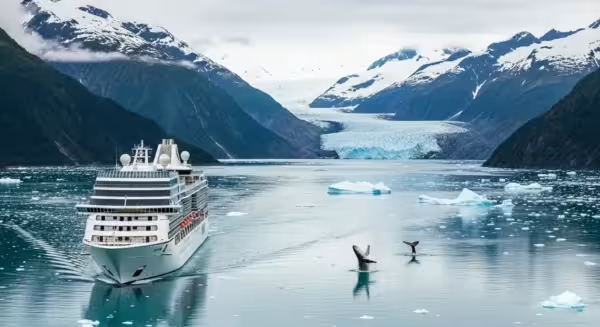
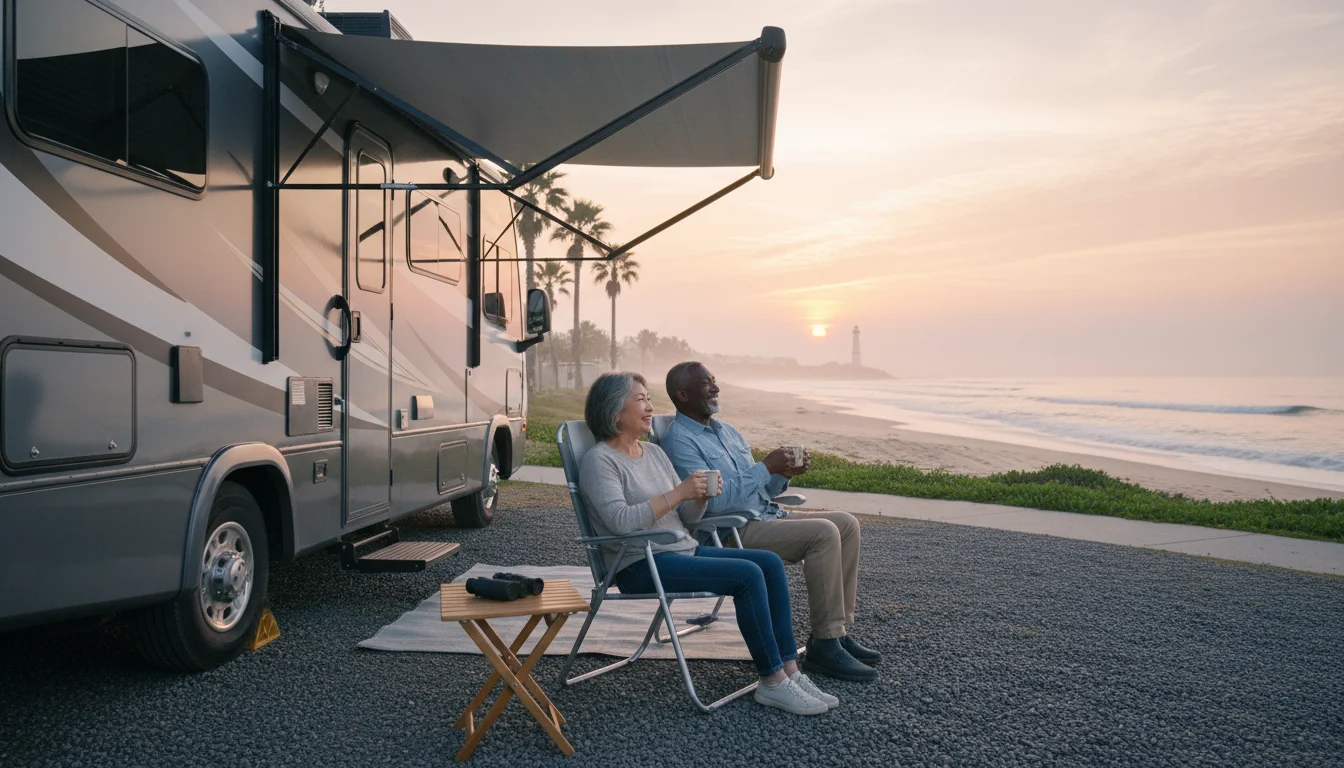
Introduction: Embracing the Open Road in Your Retirement Journey
There’s a certain magic that settles in with retirement. The alarm clock is finally silenced, the calendar clears, and for the first time in decades, your time is truly your own. For many of us, this newfound freedom awakens a long-dormant dream: the dream of seeing America. Not in a rushed, two-week vacation, but slowly, deliberately, and on our own terms. This, my friends, is where the incredible world of the RV lifestyle comes into play.
Imagine waking up not to the sound of neighborhood traffic, but to the gentle lapping of waves on a coastal shore, the whisper of wind through towering pines, or the majestic silence of a desert sunrise. An RV isn’t just a vehicle; it’s a home on wheels, a ticket to freedom, and a vessel for creating the memories of a lifetime. It offers the perfect blend of adventure and comfort—you can explore the country’s most rugged landscapes by day and retreat to your own cozy bed, with your own pillow, by night. You have your own kitchen, your own bathroom, and a front-row seat to the greatest show on earth: the vast, beautiful, and ever-changing American landscape.
Whether you’re a seasoned road warrior or just beginning to entertain the idea of senior camping, this guide is for you. We’ll explore some of the most breathtaking and manageable RV travel routes our country has to offer, specifically chosen for retired adventurers who value scenery, history, and a comfortable pace. It’s time to trade the daily routine for the open road. Let’s get rolling!

Finding Your Perfect Route: Exploring America’s Scenic Byways
The beauty of an RV trip is that the “best” route is entirely up to you. Do you crave the salty air of the ocean, the cool embrace of the mountains, or the nostalgic pull of small-town America? To get your imagination firing, here are five classic and beloved routes that offer a little something for every kind of traveler. Each one is more than just a road—it’s a curated experience.
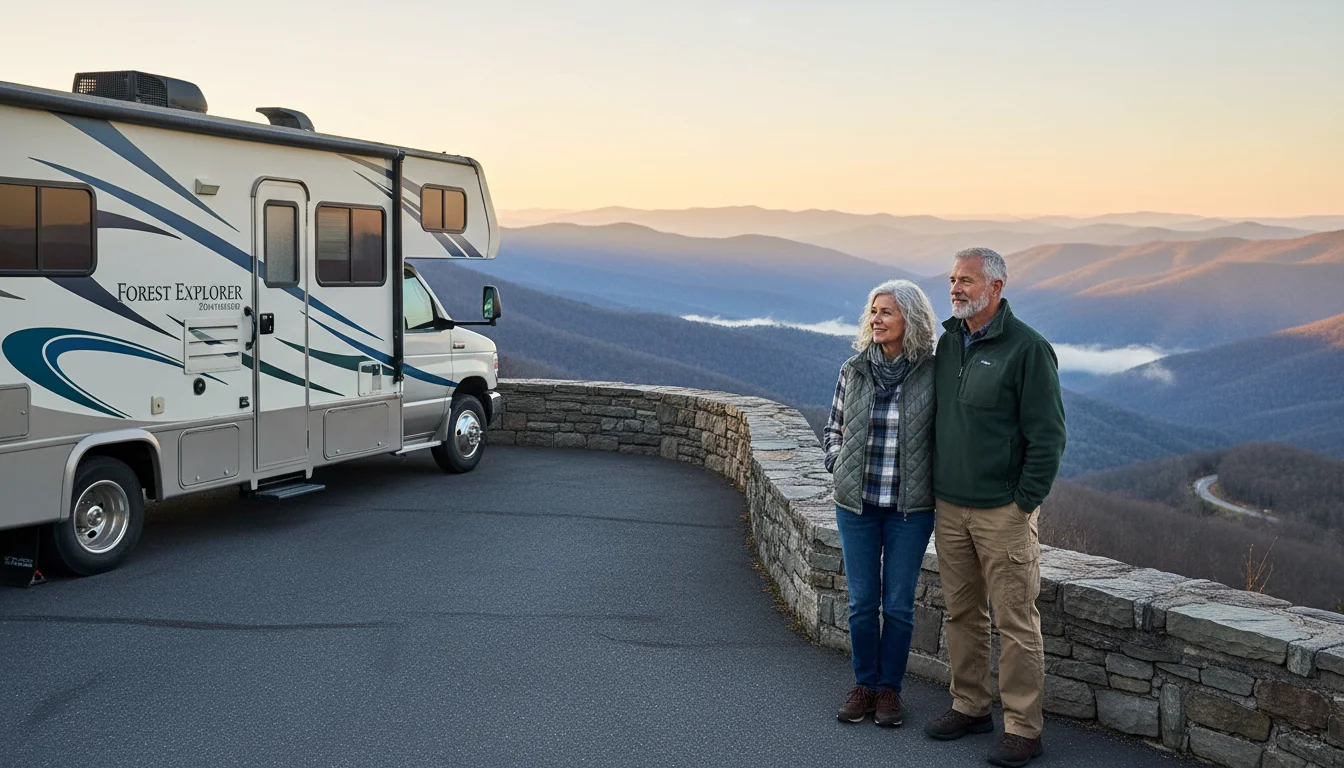
1. The Blue Ridge Parkway: Appalachian Majesty
Best for: Mountain lovers, photographers, and fans of traditional music and crafts.
Often called “America’s Favorite Drive,” the Blue Ridge Parkway is a 469-mile scenic masterpiece that meanders through the Appalachian Highlands of Virginia and North Carolina. What makes it perfect for the RV lifestyle is its deliberate, unhurried pace. The speed limit is a gentle 45 mph, and there are no commercial vehicles or billboards to spoil the view. It’s a road designed purely for pleasure.
You can start your journey at the northern end in Shenandoah National Park and wind your way south to the Great Smoky Mountains National Park. Along the way, you’ll find hundreds of scenic overlooks, each offering a new, breathtaking vista of misty blue mountains rolling into the horizon. The parkway is a haven for senior camping, with numerous well-maintained campgrounds like Mount Pisgah or Big Meadows that can accommodate various RV sizes. Be sure to book these spots well in advance, especially during the stunning autumn color season.
The journey is also a cultural one. Stop in towns like Asheville, North Carolina, a vibrant hub of art, breweries, and fantastic food. Visit the Folk Art Center to see traditional Appalachian crafts or pull over at the Mabry Mill in Virginia, a picturesque gristmill and living history museum. The region’s rich musical heritage is always nearby, and you might just stumble upon an impromptu bluegrass jam session at a local general store.
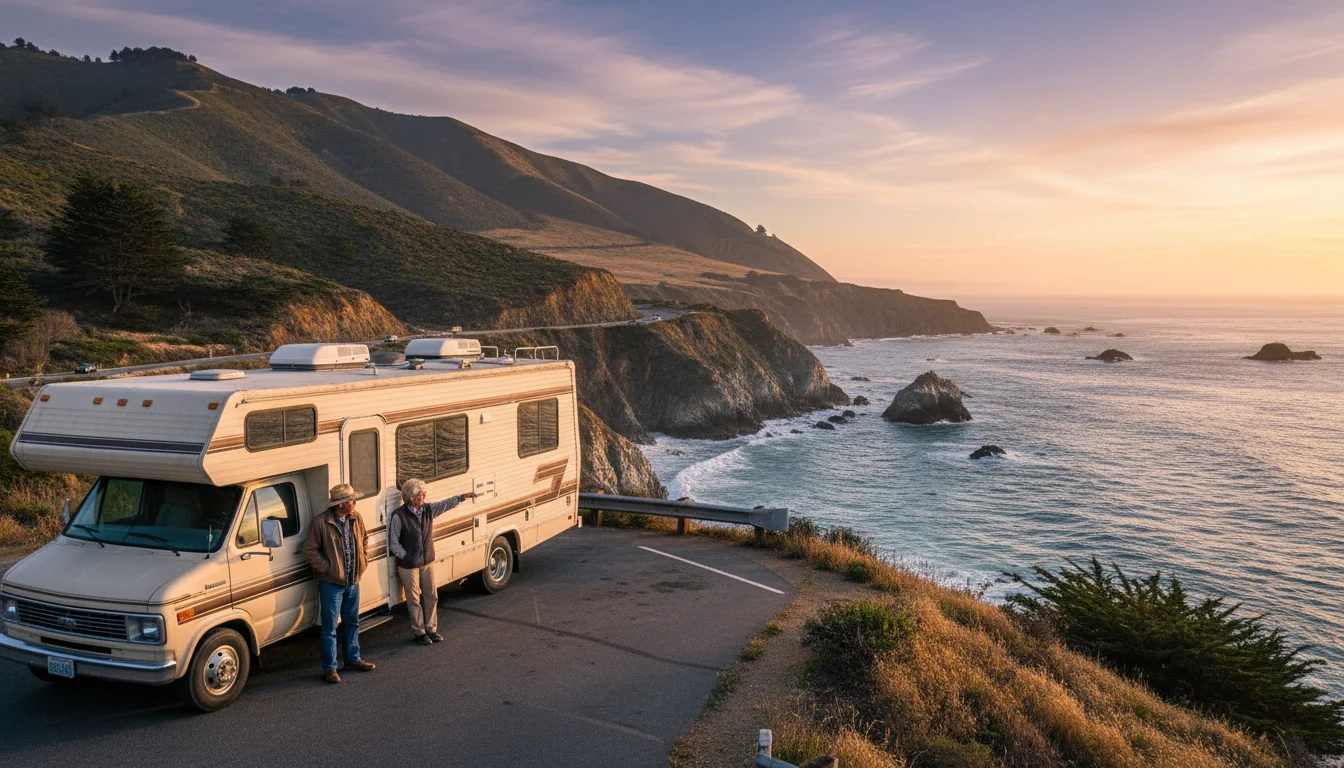
2. The Pacific Coast Highway: A West Coast Spectacle
Best for: Ocean admirers, redwood forest explorers, and lovers of dramatic scenery.
California’s State Route 1, the legendary Pacific Coast Highway (PCH), is one of the most iconic cross-country trips—or at least, coast-hugging trips—you can take. This drive is a feast for the senses, with the powerful Pacific Ocean on one side and the rugged California coastline on the other. While some stretches, particularly through Big Sur, can be narrow and winding, they are manageable with careful driving and a properly sized RV.
A popular route is to travel from south to north, starting near Los Angeles and heading up toward San Francisco and beyond. This puts you on the inland side of the road, which can feel a bit more secure on those cliff-hugging turns. You’ll pass through charming beach towns like Carmel-by-the-Sea, witness the incredible Bixby Bridge, and see colonies of elephant seals lounging near San Simeon. North of San Francisco, the landscape transforms as you enter the territory of the giant redwoods. Driving your home-on-wheels through the Avenue of the Giants is a humbling and unforgettable experience.
Campgrounds along the PCH are in high demand, so planning is crucial. State beach campgrounds like Leo Carrillo State Park or Kirk Creek Campground offer million-dollar views for a modest fee. This is a journey of epic scale, a true bucket-list adventure that proves retirement is anything but retiring.
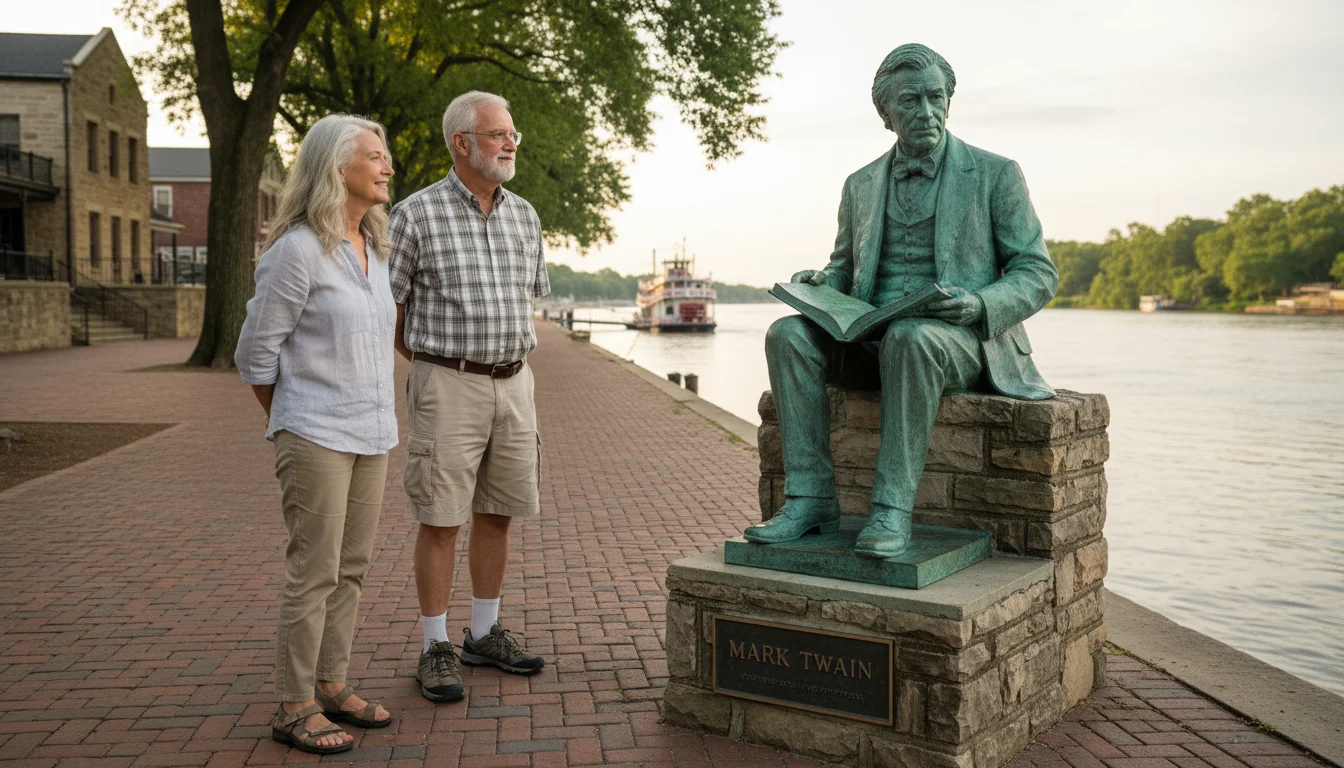
3. The Great River Road: America’s Heartland
Best for: History buffs, culture seekers, and those wanting a flatter, more relaxed drive.
For a journey through the very soul of America, look no further than the Great River Road. This collection of state and local roads follows the course of the mighty Mississippi River for nearly 3,000 miles, from its humble headwaters in Minnesota all the way to the Gulf of Mexico in Louisiana. It’s a less dramatic but deeply fascinating alternative to the coastal routes.
The route is divided into a series of legs, allowing you to tackle as much or as little as you like. You’ll travel through 10 states, each with its own unique flavor. Explore the birthplace of Mark Twain in Hannibal, Missouri. Listen to the birth of the blues in the Mississippi Delta. Savor the Cajun and Creole flavors of New Orleans. The drive itself is generally flat and easy, with plenty of riverfront towns and cities offering excellent RV parks and campgrounds. You’ll pass rolling farmland, quaint historic villages, and major metropolises. It’s a wonderful way to see the diversity of American life, history, and culture unfold at a leisurely pace.
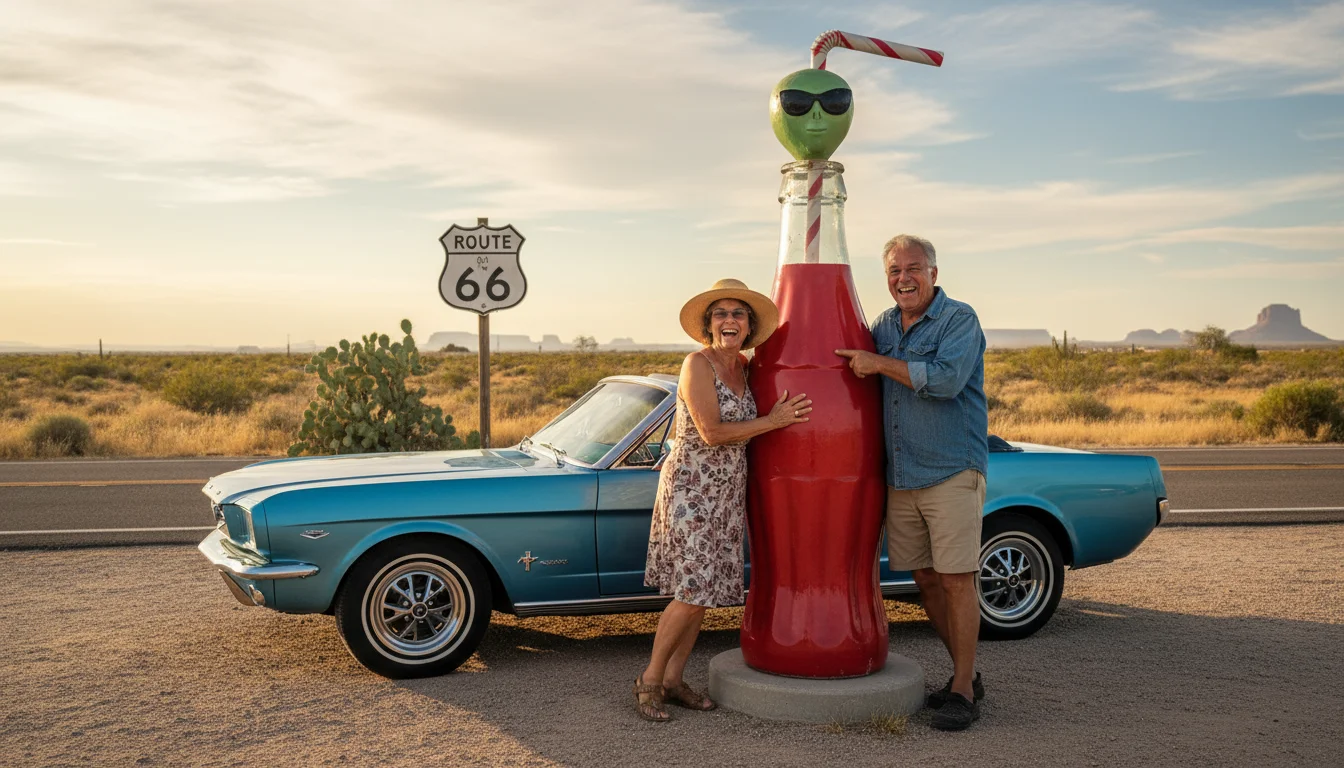
4. Route 66: The Mother Road of Nostalgia
Best for: Nostalgia seekers, lovers of Americana, and anyone with a playful spirit.
Get your kicks on Route 66! While the original highway was decommissioned decades ago, the spirit of the Mother Road is alive and well. A dedicated community has preserved long stretches of the original road, along with its quirky motels, classic diners, and whimsical roadside attractions. This isn’t a trip about getting from Point A to Point B quickly; it’s about savoring the journey and stepping back in time.
Starting in Chicago and ending in Santa Monica, California, this ultimate cross-country trip takes you through the heart of the country. You can see the Gateway Arch in St. Louis, stand on a corner in Winslow, Arizona, and marvel at the kitschy charm of the Cadillac Ranch in Texas. The route is well-supported by modern RV parks, many of which embrace the retro theme. It’s a fun, lighthearted adventure that connects you with a bygone era of American road-tripping and reminds us that sometimes, the destination is the road itself.
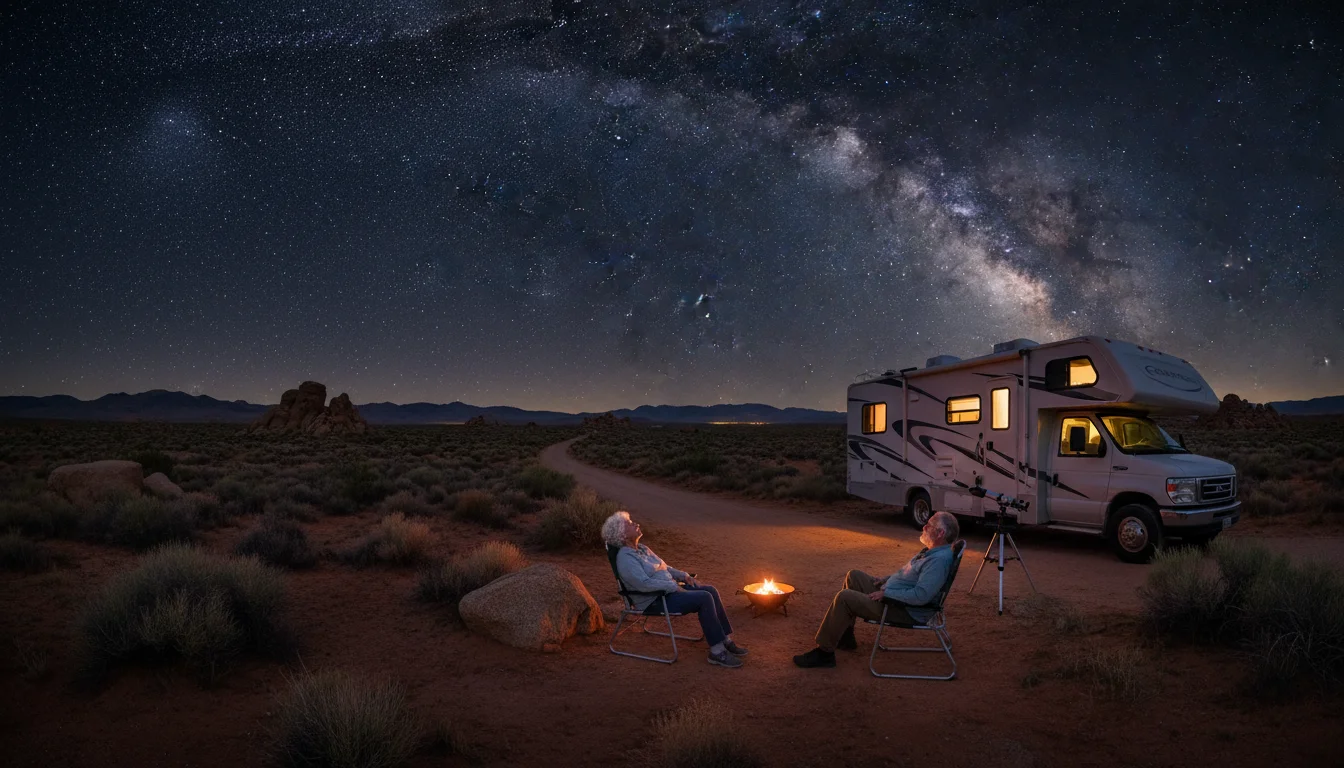
5. The Loneliest Road in America: Desert Solitude and Stargazing
Best for: Adventurous spirits, stargazers, and those seeking peace and quiet.
If your idea of a perfect trip involves wide-open spaces and profound tranquility, then U.S. Route 50 across Nevada might be for you. Dubbed “The Loneliest Road in America” by Life magazine in 1986, this route offers a different kind of beauty. It’s a journey through the vast, high-desert basins and ranges of the Great Basin, where the sky feels immense and the silence is soul-stirring.
The drive takes you through historic mining towns like Ely and Austin. The real star of the show, however, is Great Basin National Park, one of the least-visited national parks in the country. Here, you can tour the Lehman Caves, see ancient bristlecone pines (the oldest living things on Earth), and experience some of the darkest night skies in the continental U.S. The stargazing is simply spectacular. This route is perfect for boondocking (camping off-grid), but there are also plenty of state park and private campgrounds. It’s a meditative journey that offers a unique sense of accomplishment and a deep connection to the natural world.
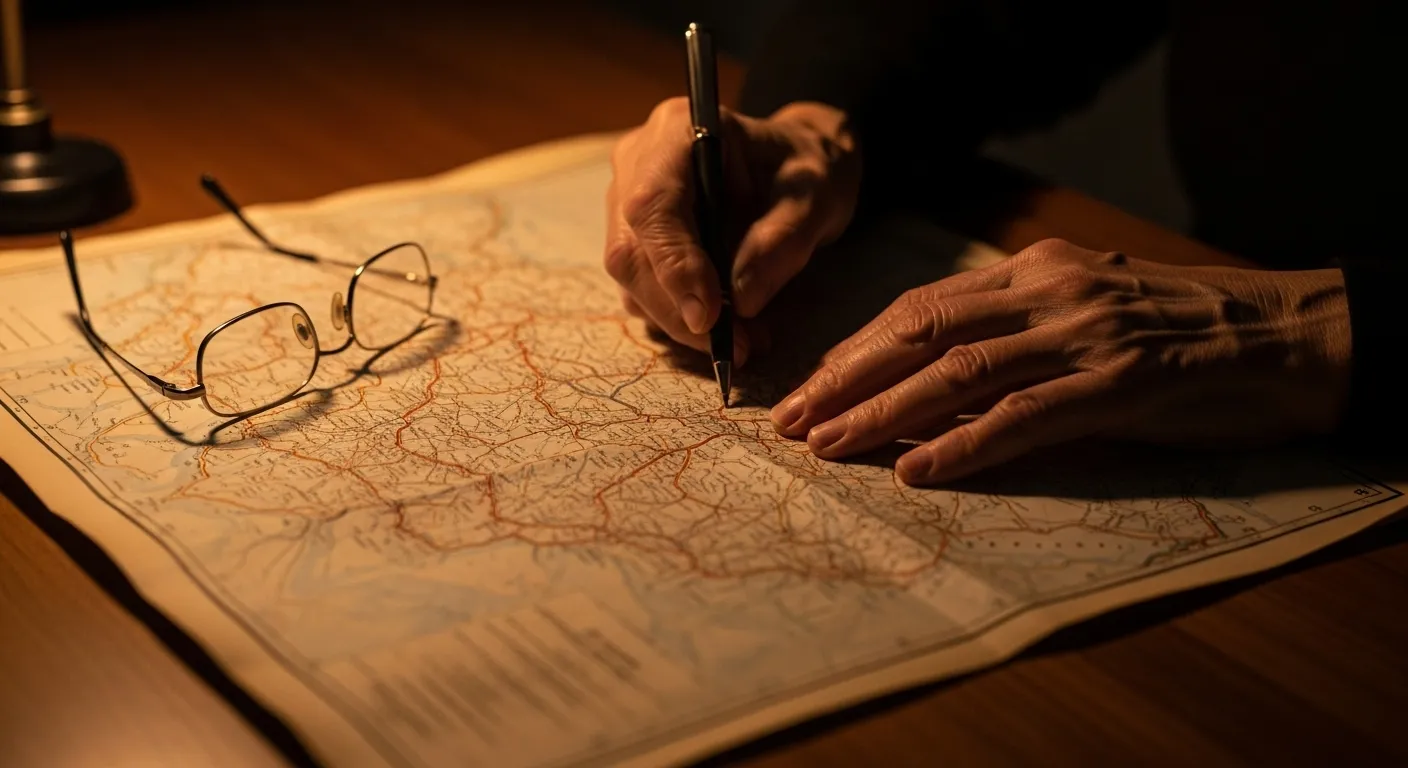
Tips for Planning Your Grand Adventure
An amazing RV trip is all about good planning. A little preparation on the front end ensures a smooth, stress-free journey, letting you focus on the fun. Here are a few tips to get you started on the right foot.
Find the Right Rig for You: If you’re new to the RV lifestyle, the sheer number of options can be overwhelming. From massive Class A motorhomes to nimble camper vans (Class B) and versatile travel trailers, there’s a fit for every comfort level and budget. The best advice? Try before you buy. Renting a couple of different types of RVs for a weekend trip can give you an invaluable feel for what you like to drive and live in.
Embrace the Art of Slow Travel: This is the golden rule of retirement travel! You’re not commuting anymore. There’s no need to rush. Many seasoned RVers follow the “2-2-2 Rule”: drive no more than 200 miles in a day, arrive at your campground by 2 p.m., and stay for at least 2 nights. This gives you time to set up camp in the daylight, explore the local area, and actually relax without feeling like you’re constantly on the move.
Book Your Stays in Advance: While spontaneity is wonderful, popular destinations—especially National Park campgrounds—get booked up six months to a year in advance. Use websites like Recreation.gov for federal campgrounds and plan ahead. For more unique stays, consider a membership with Harvest Hosts (which lets you camp overnight at wineries and farms) or Boondockers Welcome (offering stays on private property).
Stay Healthy and Safe on the Road: Pack a comprehensive first-aid kit and keep a list of your medications, dosages, and pharmacy information handy. Before you leave, map out major hospitals or urgent care centers along your general route. It’s also wise to have a good roadside assistance plan specifically for RVs. Peace of mind is the ultimate travel luxury.

A Word from a Fellow Traveler: Lessons from the Road
When my spouse and I first bought our used Class C motorhome, we were filled with a mix of excitement and sheer terror. Could we really handle this big machine? What if something breaks? The first few trips were a comedy of errors—fumbling with the sewer hose, backing into a campsite crookedly a dozen times, and learning that things will, inevitably, rattle loose as you drive.
But a funny thing happened. We learned. We got better. And most importantly, we discovered the incredible community that exists within the RV lifestyle. We learned that the neighbor in the next campsite is almost always willing to offer a helping hand, a useful tip, or a shared story around a campfire. We’ve met retired teachers from Florida, former engineers from Washington, and farmers from Iowa, all united by a shared love for the open road.
One of my favorite memories came from a total mistake. We took a wrong turn in Utah and ended up on a dusty backroad. Instead of turning around, we decided to see where it went. It led us to a small, hidden canyon with ancient petroglyphs we never would have found otherwise. That’s the real magic of this lifestyle: the freedom to get a little lost, to change your plans on a whim, and to discover the beauty that lies just off the beaten path. The biggest lesson we’ve learned is to be flexible. The perfect plan is the one that has room for imperfection, because that’s where the best adventures are found.

Resources to Help You Start Your Engine
You don’t have to plan your journey alone! There is a wealth of information available to help you embrace the RV lifestyle with confidence. These resources are a great place to start your research and connect with fellow travelers.
RV Clubs and Communities: Groups like Good Sam Club, Escapees RV Club, and Family Motor Coach Association (FMCA) offer a treasure trove of benefits, including campground discounts, roadside assistance plans, mail forwarding services, and online forums where you can ask questions and share experiences with thousands of other RVers.
Trip Planning and Campground Reviews: Websites like Campendium, The Dyrt, and RV LIFE Trip Wizard are indispensable for finding and booking campgrounds, reading real-world reviews, and planning your route with RV-safe navigation that takes your vehicle’s height and weight into account.
National and State Park Information: Travel and recreation information for seniors is available at the National Park Service. The America the Beautiful Senior Pass is one of the best deals in the country, offering lifetime access to all national parks and federal recreational lands for a small one-time fee. For local programs, check your city or county’s Parks and Recreation department website, as they often manage beautiful and affordable campgrounds.
General Lifestyle and Support: For lifestyle and community resources, AARP offers extensive articles and local chapters that can be a great source of information and connection. And while not directly travel-related, opportunities to give back while on the road can be found via AmeriCorps Seniors, which sometimes has park-based volunteer roles.
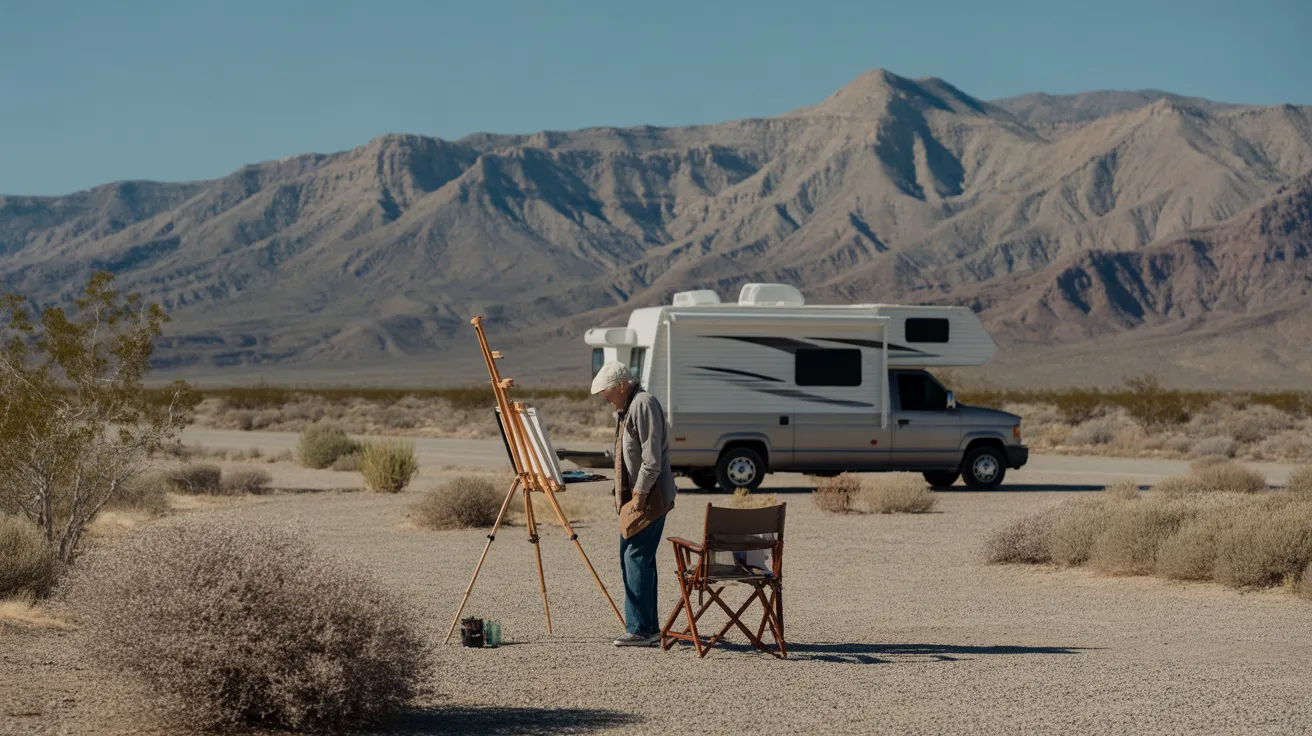
Frequently Asked Questions About Senior RV Travel
It’s natural to have questions before embarking on such a big adventure. Here are answers to some of the most common queries we hear from aspiring senior RVers.
1. Is the RV lifestyle expensive for retirees on a fixed income?
It certainly can be, but it doesn’t have to be. The cost varies dramatically based on your RV, travel style, and choices. You can save a great deal of money by staying in less expensive state parks or by “boondocking” (camping for free on public lands without hookups). Cooking your own meals in the RV kitchen is a huge money-saver compared to eating out. When you factor in what you might spend on hotels, flights, and restaurants for a traditional vacation, a well-planned RV trip can be a very budget-friendly way to see the country.
2. I’m worried about driving such a large vehicle. Is it difficult?
There is definitely a learning curve, but millions of people of all ages have mastered it. The key is to start slow and practice. Before your first big trip, take your RV to a large, empty parking lot to practice turning, backing up, and parking. Many RV dealers and clubs offer driving courses specifically designed for new owners. Consider starting with a smaller Class B or Class C motorhome, which handle more like a large van or truck.
3. How do we handle mail, bills, and doctor’s appointments on the road?
This is a common concern for full-time or long-term travelers. Technology is your best friend here. Set up online bill pay for all your recurring expenses. For physical mail, services like the Escapees RV Club Mail Service can receive your mail, scan the envelopes for you to view online, and forward important packages to you at a designated campground or post office. For healthcare, telehealth appointments are becoming increasingly common, and for prescriptions, many national pharmacy chains can transfer and fill them at any of their locations.
4. What’s the best way to meet other people and avoid feeling lonely?
The RV community is incredibly social! It’s one of the best parts of the lifestyle. The easiest way to meet people is right in the campground—a simple “hello” while you’re walking your dog or setting up your site can lead to a great conversation. Many campgrounds host social hours or potlucks. Joining an RV club and attending their rallies or events is another fantastic way to build lasting friendships with like-minded travelers.
5. What is the best time of year to take long cross-country trips?
For most of the country, the “shoulder seasons” of spring (April-May) and fall (September-October) are ideal. The weather is generally mild, the summer crowds have thinned out, and in the case of autumn, you’re often treated to spectacular foliage. Traveling during these times can also mean lower campground fees. Of course, if you’re a “snowbird,” heading south to places like Arizona, Florida, or Texas during the winter is a classic RV tradition for a reason!
Disclaimer: The advice in this article is based on general experience and is for informational purposes. Please research local opportunities and consult with relevant experts before making significant lifestyle changes or purchases.
The open road is calling. It’s a call to adventure, to discovery, and to a richer, fuller retirement than you ever imagined. So, grab a map, start dreaming, and we’ll see you out there on the highway.
For expert guidance on senior health and finance, visit Centers for Medicare & Medicaid Services (CMS), Social Security Administration (SSA), Consumer Financial Protection Bureau (CFPB), Administration for Community Living (ACL) and Eldercare Locator.
|
Fact-Checked Content
Our editorial team reviews all content for accuracy and updates it regularly. Learn about our editorial process →
|

















